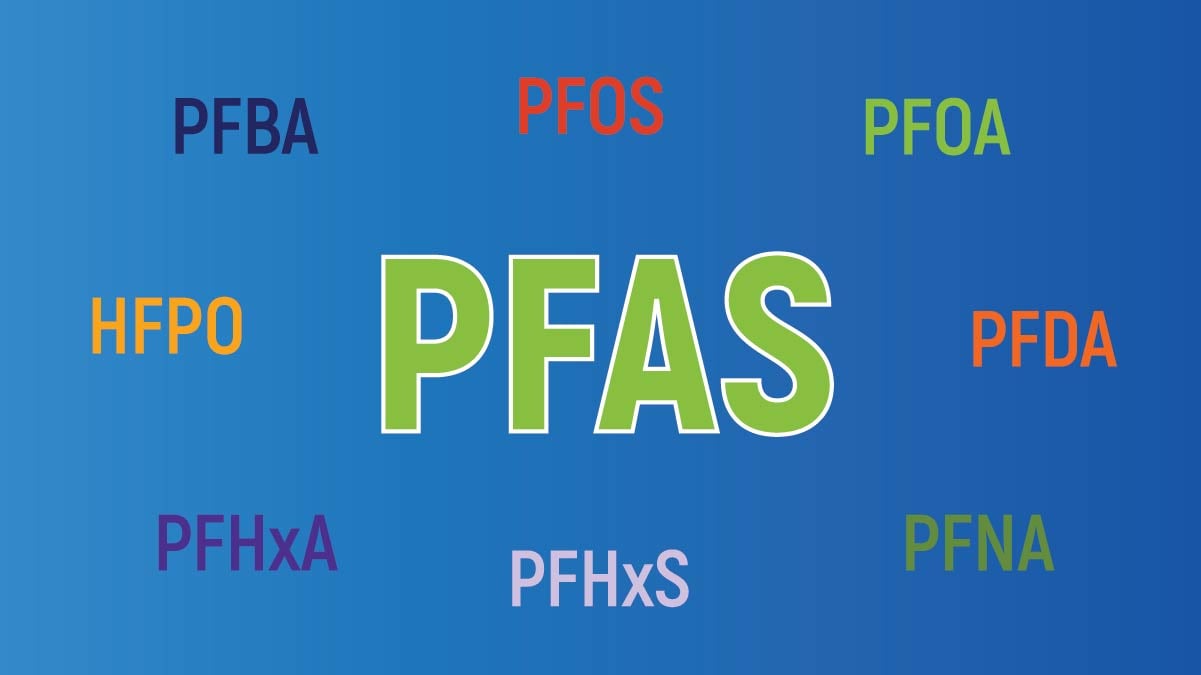Ever since the PFAS Action Plan of 2019 was released by the U.S. EPA, the world of PFAS contamination, testing, and regulation has been moving forward at breakneck speed. To help Pace® customers stay up to date, we’ve started compiling the news and developments we think should be on everyone’s radar.
Want Pace® News and Views delivered to your inbox? Subscribe here.
EPA PLANS TO REMOVE DE MINIMUS REPORTING EXEMPTION FOR PFAS UNDER TRI
As many of our industrial clients know, PFAS were added for the first time to the EPA’s Toxic Release Inventory (TRI) program in 2020. With the release of the first Toxic Release Inventory National Analysis report on Mar 3rd, the EPA announced that it plans to introduce rulemaking this summer (2022) which would remove the de minimus reporting exemption for PFAS to provide a more complete picture of PFAS releases and waste management practices for these chemicals. Read the EPA’s press release.
MASSACHUSETTS LEGISLATORS SEEK TO REDUCE AIRBORNE PFAS CONTAMINATION
Massachusetts senators recently issued S2655, a bill that, if passed, would establish a moratorium on new business that has the potential to release PFAS into the air. As the National Law Review points out, Massachusetts legislators are seeking to regulate more than just the commercial incineration of PFAS. As written, this bill would cover all PFAS and could impact a wide range of industries and businesses.
PENNSYLVANIA PROPOSES PFOA AND PFOS LIMITS IN DRINKING WATER
In late February, the Pennsylvania Department of Environmental Protection made good on its promise to propose Maximum Contaminant Levels (MCLs) for PFOA and PFOS in drinking water. Previously, the state followed the health advisory levels set by the U.S. EPA of 70 ppt for PFOA and PFOS, individually or combined. The new proposal sets a limit of 18 ppt for PFOS and 14 ppt for PFOA.
DELAWARE PROPOSES PFOA AND PFOS LIMITS IN DRINKING WATER
Propelled by Delaware House Bill 8, which was signed into law in October 2021, the Delaware Department of Public Health has proposed MCLs for PFOA and PFOS in drinking water of 21 ppt and 14 ppt, respectively, or 17 ppt combined. These limits will become effective six months after final publication in the Delaware Register, and sampling is expected to begin in the spring of 2023. Download the DPH Implementation Plan.
CALIFORNIA LEGISLATURE PROPOSES MORE BILLS PROHIBITING PRODUCTS CONTAINING PFAS
In 2021, the California legislature passed AB1200, a bill banning the use of "regulated" PFAS in plant-based food packaging and in cookware. The bill was signed into law by the Governor in October. In Q1 2022, the state legislature introduced two additional bills prohibiting the manufacture and sale of products containing PFAS. AB2771 bans PFAS in cosmetics, whether the chemicals were added intentionally or not, and AB1817 bans regulated PFAS in food packaging, new (not previously owned) juvenile products, and textiles. Manufacturers would also be required to use the “least toxic alternative” when replacing these PFAS chemicals. At this time, AB1817 does not specify which research bodies will be considered authoritative when assessing toxicity of replacement chemicals, including replacement PFAS.
WISCONSIN NRB VOTES TO ADOPT 2 OUT OF 3 PFAS PROPOSALS
The Wisconsin Department of Natural Resources (DNR) recently presented three proposals designed to limit PFAS contamination in the state’s waters to the Wisconsin Natural Resources Board (NRB). In a meeting on February 23rd, the NRB voted to approve two out of three of the proposals:.jpg?width=386&name=pexels-sourav-mishra-1231622-(1).jpg)
Groundwater – Based on its economic impact analysis, the board rejected a proposal to limit PFOA and PFOS in groundwater to 2 ppt, individually or combined.
Surface water – The board approved an MCL of 8 ppt for PFOS for all waters that can naturally support fish and an MCL of 20 ppt for PFOA in surface water used as a drinking source.
Drinking water – The board also approved an MCL of 20 ppt for PFOA and PFOS, individually or combined, in drinking water.
These rules now head to Gov. Evers’s desk for approval and then to the state legislature for review.
For an update on PFAS actions in your state and how Pace® can support your compliance efforts, request a Technical and Regulatory Briefing.
ON-DEMAND AND UPCOMING EVENTS
PACE® FEATURED ON THE ENVIRONMENTAL TRANSFORMATION PODCAST
Paul Jackson, Program Manager, Environmental Compliance & Emerging Contaminants at Pace®, speaks to host Sean Grady about the history of PFAS usage, why it’s so challenging to regulate PFAS, the test methods that can be used for various matrices, and the recent updates to the EPA’s Unregulated Contaminant Monitoring Rule (UCMR) program. Listen here.
WEBINAR: PFAS CONSIDERATIONS FOR WASTEWATER PROFESSIONALS
The EPA’s 2021-2024 PFAS Strategic Roadmap includes several planned actions that will impact wastewater professionals, both in industry and the public sector. Earlier this month, Pace® PFAS experts delivered a special technical and regulatory update addressing wastewater concerns, including the unique challenges of PFAS in wastewater, test methods that can be used with non-potable waters, the wastewater regulatory environment, and sampling guidance. Watch the webinar.





